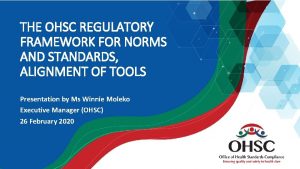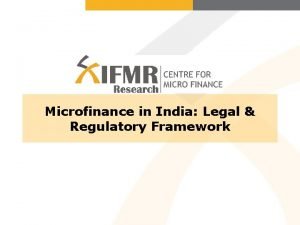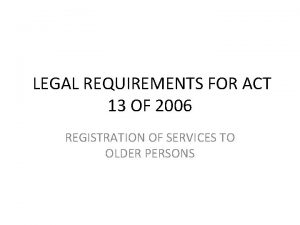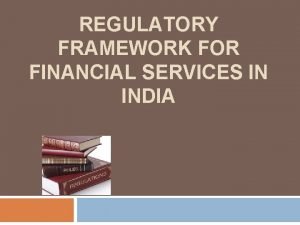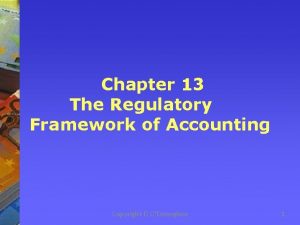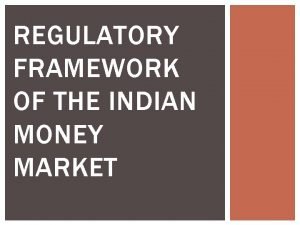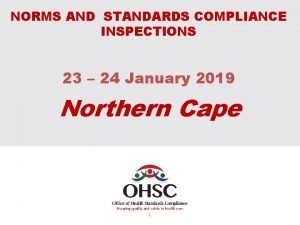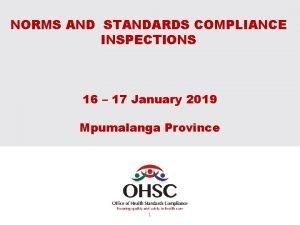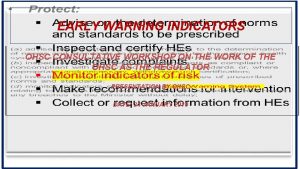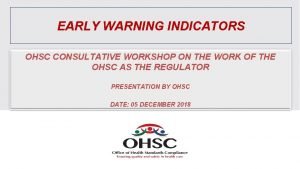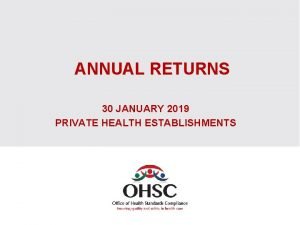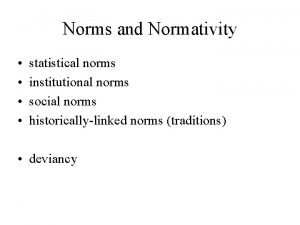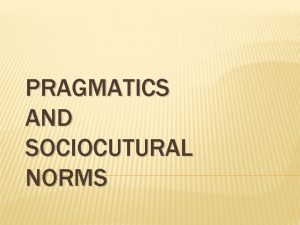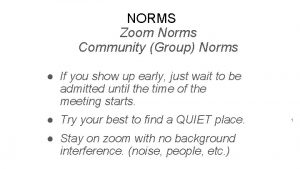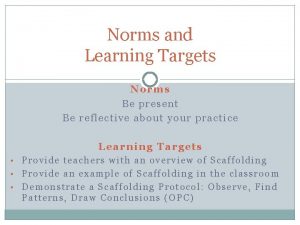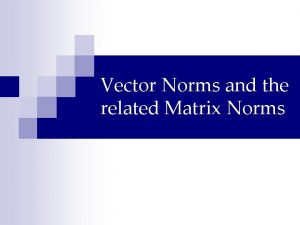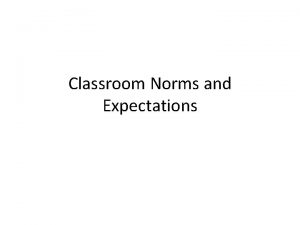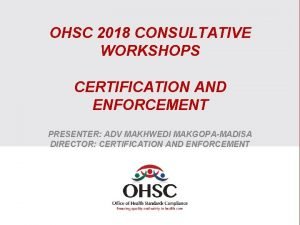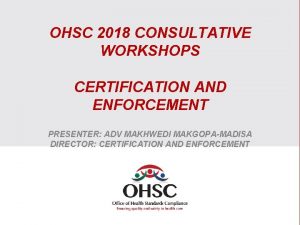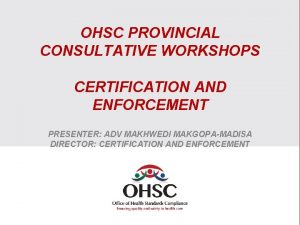THE OHSC REGULATORY FRAMEWORK FOR NORMS AND STANDARDS














- Slides: 14

THE OHSC REGULATORY FRAMEWORK FOR NORMS AND STANDARDS, ALIGNMENT OF TOOLS Presentation by Ms Winnie Moleko Executive Manager (OHSC) 26 February 2020 1

OUTLINE OF PRESENTATIO N • Lessons learned with implementation of the legal framework • Purpose of Data collection for regulations • Streamlining of processes for efficient data collection 2

WHYLESSONS ENFORCED LEARNED IN IMPLEMENTING A REGULATORY FRAMEWORK COMPLIANCE? 3

LESSONS LEARNED Requirements for the Ideal Facility programme and OHSC Regulatory process must be aligned to maximise the improvement in quality of services for the resource input into quality improvement processes. OHSC and Ideal Facility programme work together to agree the content of the inspection tools and manuals/frameworks and the method of measurement. 4

WHYDATA ENFORCED COLLECTION FOR REGULATIONS COMPLIANCE? 5

REGULATED INFORMATION REQUIREMENTS: OHSC Procedural regulations stipulate the information to be collected on an annual basis from all health establishments to which promulgated norms and standards regulations applicable to different categories of health establishments apply. 6

PURPOSE OF DATA COLLECTED BY OHSC – ANNUAL RETURNS • Sampling framework for inspections • Preparation for inspections (services provided, infrastructure, human resources, utilisation rates, etc. ) • Facilitates contextualisation of inspection findings and Early Warning System indicators reported • Provides data to be utilised in the preparation of recommendations for intervention by a national or provincial department of health, a health department of a municipality or a health establishment 7

PURPOSE OF DATA COLLECTED BY OHSC –SELF ASSESSMENTS • Provide health establishments with an indication of areas of non-compliance for intervention in advance of an OHSC inspection • Provide district and provincial departments of health with an indication of quality performance throughout their area and identify areas of common deficiencies requiring intervention from district and provincial authorities • Provides the OHSC with an indication of achievement by each health establishment • Provides an opportunity for staff to walk around the health establishment and get a “hands-on” perspective of the establishment through a quality lens 8

LEGISLATIVE IMPERATIVE FOR OHSC DATA COLLECTION FROM HEALTH ESTABLISHMEN TS Procedural Regulations pertaining to the function of the Office of Health Standards Compliance and handling of complaints by the Ombud 2 Nov 2016 Chapter 2 Regulation 4: Collection of or request for information (1) All health establishments and users that are required by the Office to provide information relating to norms and standards, in terms of section 79(2)(b) of the Act, must do so by 31 March of each year. 9

(2) A SUBREGULATION 4. (2) request for information from health establishments, referred to in sub-regulation (1), must be in writing, and the required information must be in the form of Form 1 and include, at least, the following: (a) Name of health establishment; (b) legal status; (c) physical address; (d) contact details, including telephone, fax, email and website details, if any; (e) names and contact details of the person in charge; (f) category of health establishment; (g) health district in which the health establishment falls; (h) services offered; (i) operating days and times; and (j) results of the most recent annual self-assessment against norms and standards. 10

WHYALIGNMENT ENFORCED OF DATA COLLECTION COMPLIANCE? 11

EFFICIENT DATA COLLECTION – ANNUAL RETURNS • Primary Health Care (Clinics and CHCs) – Annual returns information required similar to Ideal Facility profile • OHSC has been granted access to the NDOH database to access the information collected via the Ideal Facility profile database • Annual returns and Ideal Facility profile data elements aligned to meet the requirements of both organisations • Hospitals – submit Annual Returns data via OHSC Portal 12

EFFICIENT DATA COLLECTION – SELFASSESSMENT (2) • Self-assessments will be conducted against Ideal Facility Frameworks • Ideal Facility self-assessments must be submitted to OHSC as part of their annual returns by 31 March each year • OHSC Inspection tools and Ideal Facility Frameworks will retain the current grouping of measures / elements. OHSC Inspection reports will follow the layout of OHSC Inspection tools. 13

THANK YOU 14
 Ohsc norms and standards
Ohsc norms and standards Dispositional framework vs regulatory framework
Dispositional framework vs regulatory framework Dispositional framework vs regulatory framework
Dispositional framework vs regulatory framework Legal and regulatory framework of microfinance in india
Legal and regulatory framework of microfinance in india Dq98 form
Dq98 form Regulatory framework of financial services in india pdf
Regulatory framework of financial services in india pdf Regulatory framework accounting
Regulatory framework accounting Regulatory framework of money market in india
Regulatory framework of money market in india Ohsc inspection tools
Ohsc inspection tools Ohsc inspection tools
Ohsc inspection tools Ohsc early warning system
Ohsc early warning system Ohsc
Ohsc Ohsc certificate
Ohsc certificate Ohsc annual returns
Ohsc annual returns Factors determining service standards
Factors determining service standards
